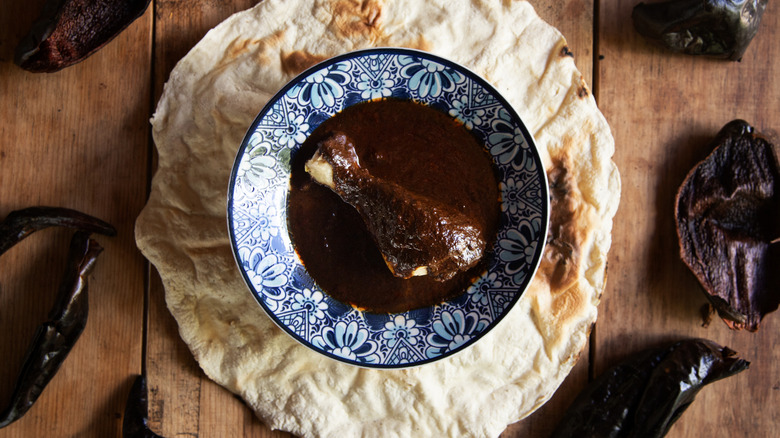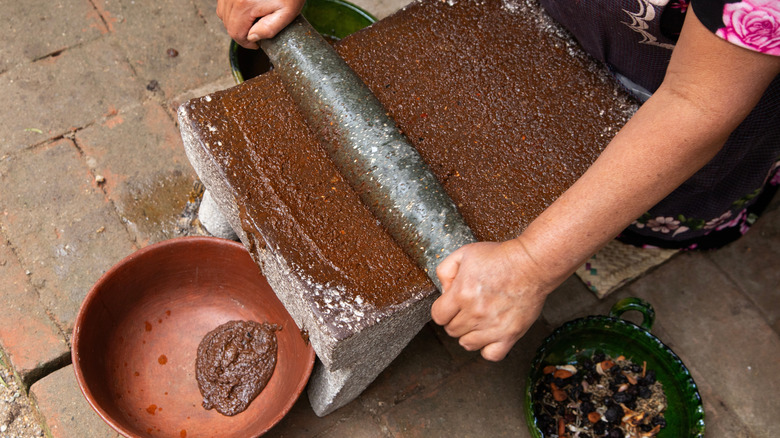Why Black Mole Is Such A Coveted (And Pricey) Dish In Mexico
Mole is often considered to be the national sauce of Mexico. Like many Mexican foods (enchiladas and tacos, for example), there are several variations of mole, ranging from chocolate-scented mole poblano from Puebla to the green mole verde that hails from the coastal region of Veracruz. But, if there is one mole to rule them all, it just might be mole negro, or black mole which comes from Oaxaca. Undertaking this expert-level recipe often means a time commitment of multiple days and up to 40 different ingredients, including chilhuacle chiles, which are highly valuable peppers. Between the cost of the chiles and the many steps needed to create black mole, it's often prepared only on the most special of occasions in the country.
Chilhuacle chiles have been grown in Mexico since the time of the Aztecs and are currently the most expensive chiles in Mexico, surpassing the value of saffron and vanilla beans. They are difficult to grow, making them prized not only for their scarcity, but because of their historical significance. You're most likely to find black mole in higher end restaurants, at weddings, during the celebration of Dia de los Muertos (Day of the Dead), and other momentous celebrations. It is seriously striking in both appearance and flavor; the sauce is dark as night and the flavor is almost impossible to comprehend. It's exceptionally savory and rich, but there are sweet, smoky, and nutty notes, with the unmistakable deep bitterness of the darkest chocolate. Black mole is classically served with turkey and chicken, but the sauce can be used in enchiladas and tamales.
Black mole requires a shocking amount of time and work
To be sure, most styles of mole require a number of different ingredients and a lot of preparation time. But black mole is particularly laborious, which is one reason it's so coveted in Mexico. Aside from the pricy chilhuacle chiles, it calls for other ingredients that aren't necessarily found in every grocery store, like mulato and pasilla negro chiles, avocado leaves, and plantains (it's okay to use the black ones). In addition, many agree that true authenticity requires other specific ingredients like Oaxacan lard and Canela cinnamon, which is different from other types of the warm spice. Needless to say, just the accumulation of ingredients could require plenty of patience.
There is a lot of toasting, grinding, frying, and stewing happening with black mole, often with traditional Mexican culinary tools like molcajetes and comals. Many recipes for black mole call for a literal burning of the peppers, which in turn causes the chef to either move the kitchen outdoors, or wear a mask, open the windows, and keep a fire blanket handy. The recipe truly and literally engages all of the senses. You get the idea just how labor intensive it is and why Rachel Ray never made it on "30 Minute Meals." So, if you ever get the chance to order it in Mexico or a good Mexican restaurant in America, you should absolutely taste this very special dish. If you attempt it at home, give yourself lots of time — and invite us over!

